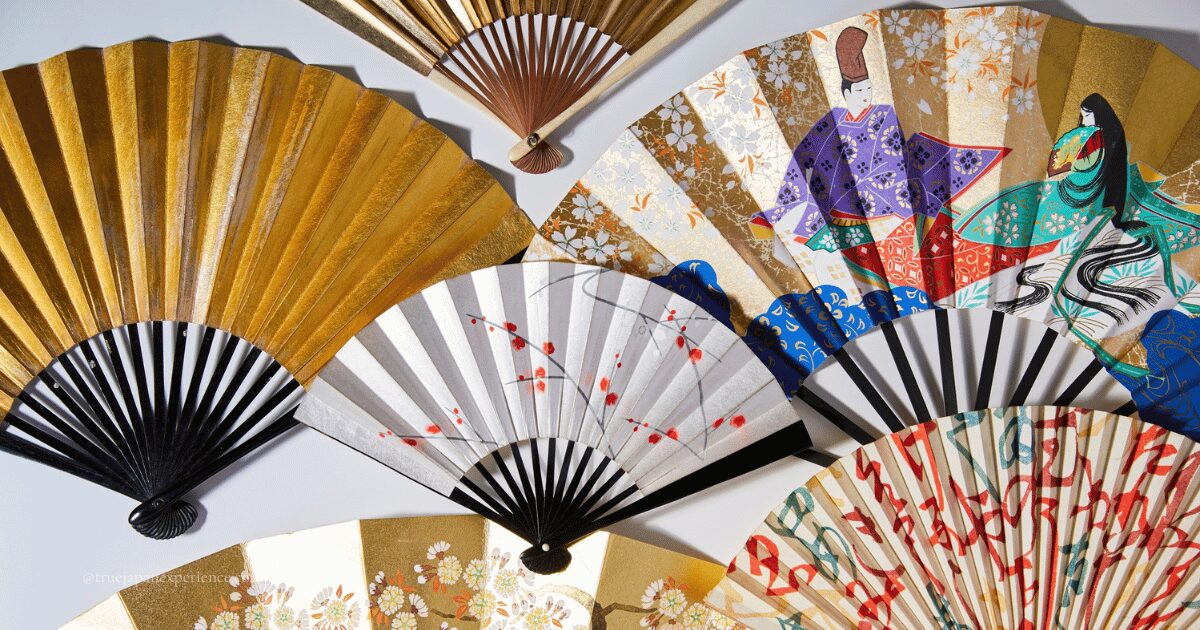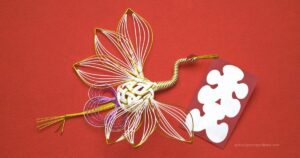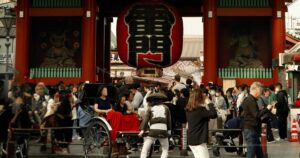Sensu (Japanese folding fan) is more than just a way to stay cool.
This elegant fan carries centuries of history, rich traditions, and beautiful design in every fold.
From ancient court rituals to modern summer festivals, the sensu has always been a symbol of Japanese culture.
Join us as we unfold its story and discover why this simple fan continues to fascinate people around the world.
What Is a Sensu (Japanese folding fan) ?
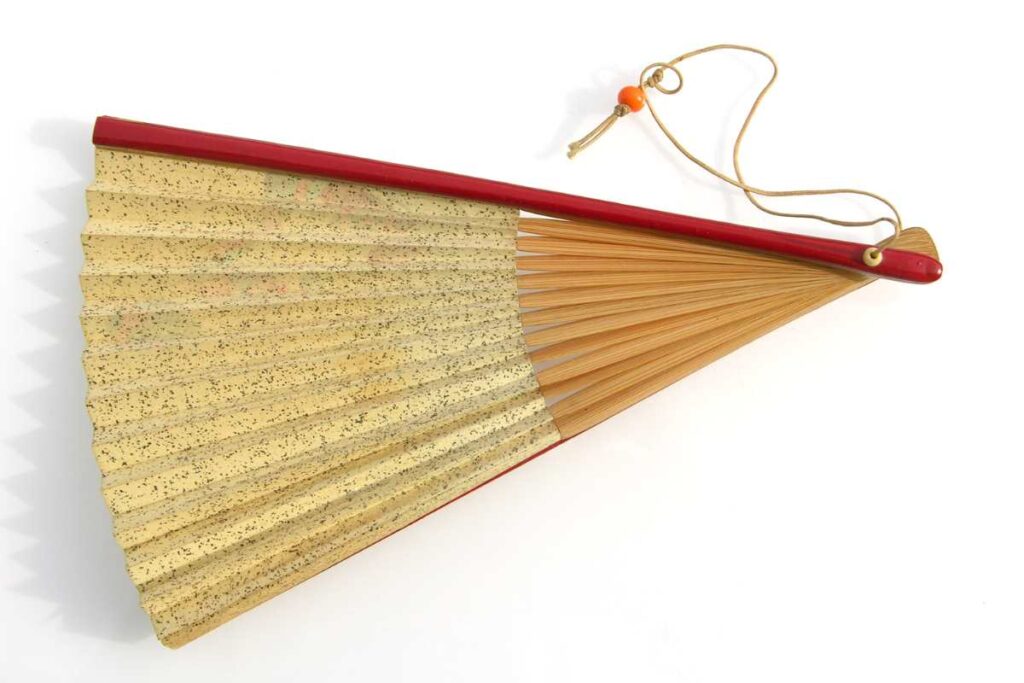
The sensu, also called an ogi in Japanese, is a folding fan that makes a soft breeze to keep you cool.
Craftsmen join bamboo or wood ribs with paper or cloth to make the fan. They connect thin bamboo sticks called the “bones,” known as senkotsu in Japanese. The sticks hold together at a little center point called the kaname (pivot), which lets the fan open wide and fold up small.
Paper or silk covers the top part of the fan, called the senmen (fan surface). A small paper band called seme wraps around the fan to keep it closed when folded.
This clever design lets you open the fan to create a cool breeze or fold it to carry lightly in your bag or pocket.
The Amazing History of the Sensu (Japanese Folding Fan)
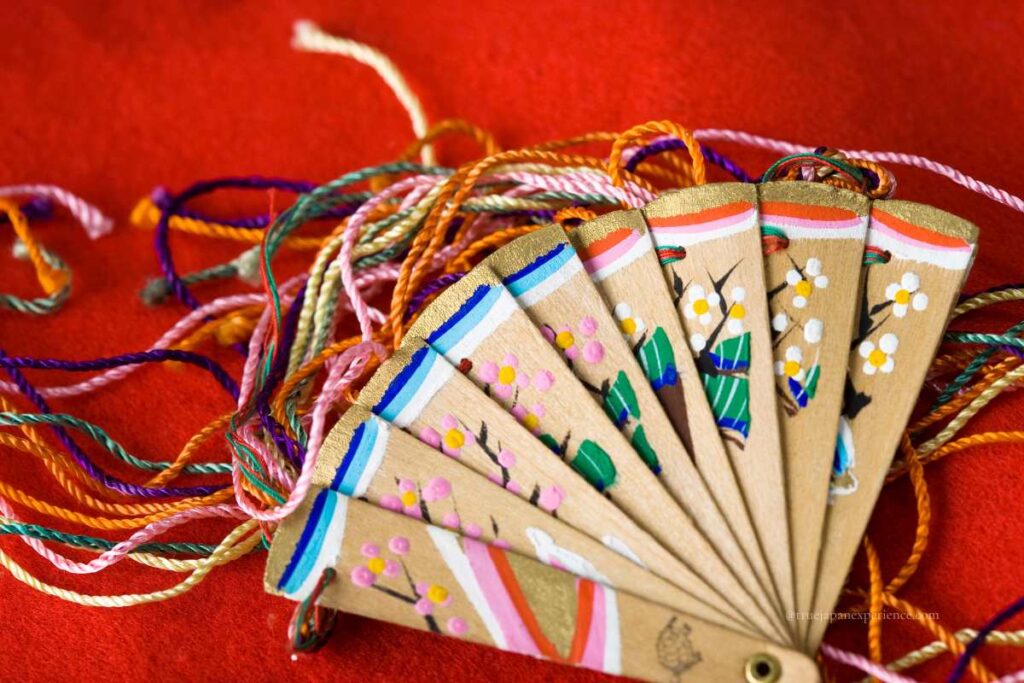
The story of the sensu begins more than 1,200 years ago during Japan’s Heian period (794–1185 AD), an era known for its flourishing art and culture.
But to truly understand how the sensu came to be, we need to look even earlier at an older fan called hiougi (檜扇).
The hiougi started as a fan made by binding thin wooden sticks—imagine long, slim pieces of wood tied together like a small book.
Nobles in the royal court used this fan not primarily for cooling, but as a tool to keep notes on complex rituals and etiquette. They showed their knowledge and social status through these fans, which became symbols of prestige.
Over time, people made the hiougi lighter and more decorative.
They created a new fan called kawahori (蝙蝠扇), which had paper glued onto one side of the ribs and looked like a bat’s wing—hence the name kawahori, meaning “bat fan.”
People especially liked these fans in summer because they were lighter and better for creating a cool breeze.
The Evolution of the Sensu Through Japanese History

The sensu originated in the Heian period (794–1185 AD) as a practical tool for note-taking. Over time during this period, it transformed into a cooling device and a fashion item.
Nobles and aristocrats decorated the fan with colorful paintings, poems, and symbols from nature and religion, turning each fan into a work of art.
By the Kamakura period (1185–1333), the sensu became more practical and was adopted by samurai warriors. These “battle fans,” called gunsen, were sturdier and larger.
Not only did samurai use them to cool themselves, but they also used fans for giving signals on the battlefield or even as a light weapon in some cases. For the samurai, the fan was also a symbol of power and discipline.

During the Muromachi period (1336–1573), Japanese folding fans began to incorporate influences from China and beyond. Both one-sided and double-sided fans appeared, with designs growing increasingly complex.
The fans also began to be used as essential props in traditional Japanese performing arts such as noh and kabuki theater. In these art forms, fans became tools for expressing emotions, moods, and storytelling.
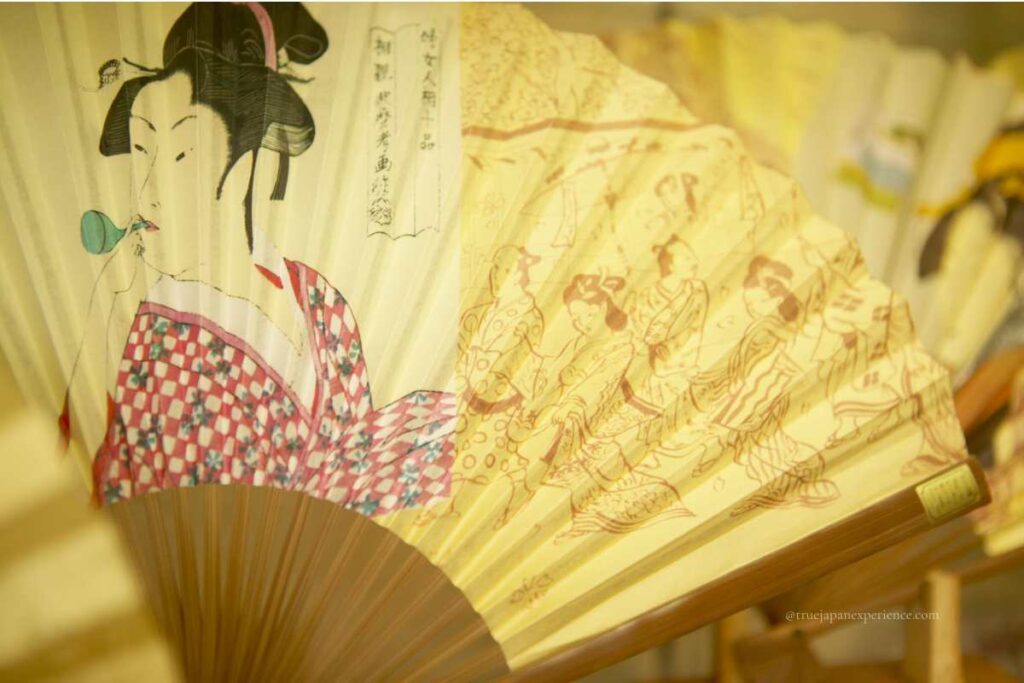
The Edo period (1603–1868) marked the time when sensu fans became widespread among the common people. Fans were no longer a luxury item only for nobles and warriors—they became everyday tools to fight the hot summer heat. The Edo period also saw a blossoming of fan art.
Fans were decorated with beautiful paintings of landscapes, flowers, and famous Japanese poetry. Fans became fashion accessories, collectible art pieces, and vital tools in cultural practices like tea ceremonies and traditional dances.
Spread of the Sensu Abroad

Japanese folding fans did not stay within Japan’s borders—they traveled abroad.
By the 15th century, Japan began exporting fans to China, India, and even Europe.
European nobles fell in love with the design and craftsmanship, giving rise to European-style fans decorated with feathers, lace, and precious fabrics. These fans influenced art movements and fashion trends, showing the cultural exchange sparked by the sensu.
The Sensu in Modern Japan
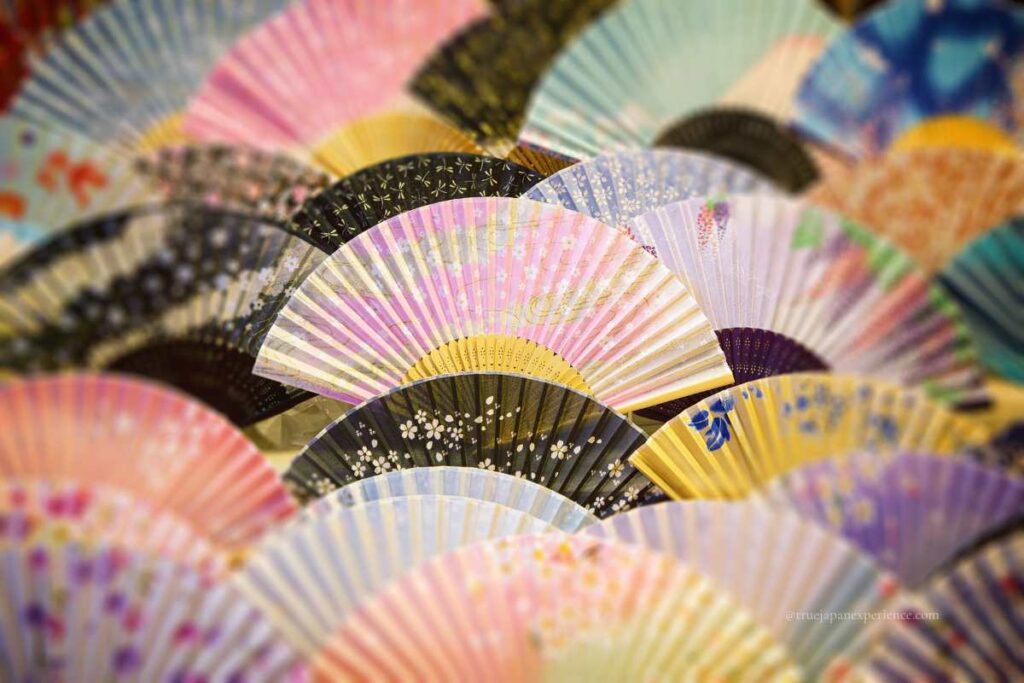
In modern times, people still treasure the sensu as an important part of Japanese culture.
Performers, hosts, and festival-goers actively use it during traditional performances, ceremonies, and festivals. Many people also carry sensu as a fashionable and practical accessory during the hot summer months.
Today, artisans craft fans in both traditional styles and modern designs, blending history with contemporary art right before your eyes.
Sensu and Japanese Culture: More Than Just a Fan

The sensu has a special shape called suehiro which means “spreading wide.” This shape is a symbol of good luck, success, and happiness in Japan.
Because the sensu symbolizes good luck, people often use it in celebrations, ceremonies, and festivals. Many choose the sensu as a popular gift for weddings and special events because they believe it brings prosperity and good fortune.
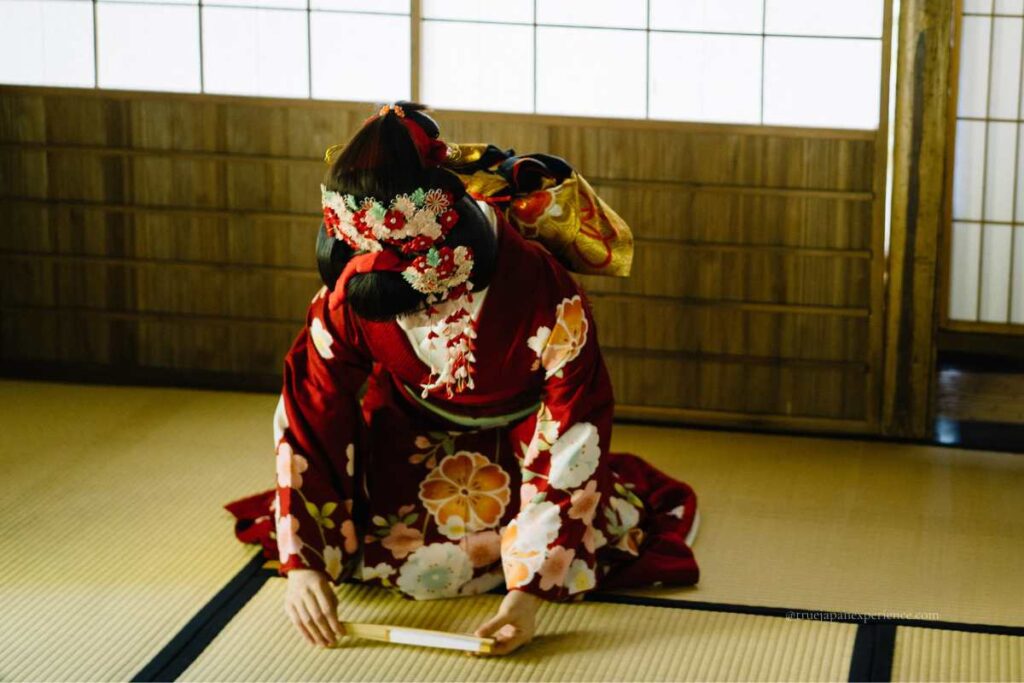
Beyond just cooling or luck, the sensu plays a big role in traditional Japanese art forms like noh theater, kabuki, tea ceremonies, and traditional dance.
In the theater, actors hold fans to show their emotions and to tell stories with graceful movements. In tea ceremonies, the fan is a sign of respect and mindfulness.
If you are interested in how the sensu is also connected to traditional arts, you may enjoy learning about the Japanese Tea Ceremony: Meaning, Manners, and How to Experience It. This ritual shares the same spirit of elegance and respect found in many aspects of Japanese culture.
Legends and Tales of the Sensu (Japanese Folding Fan)
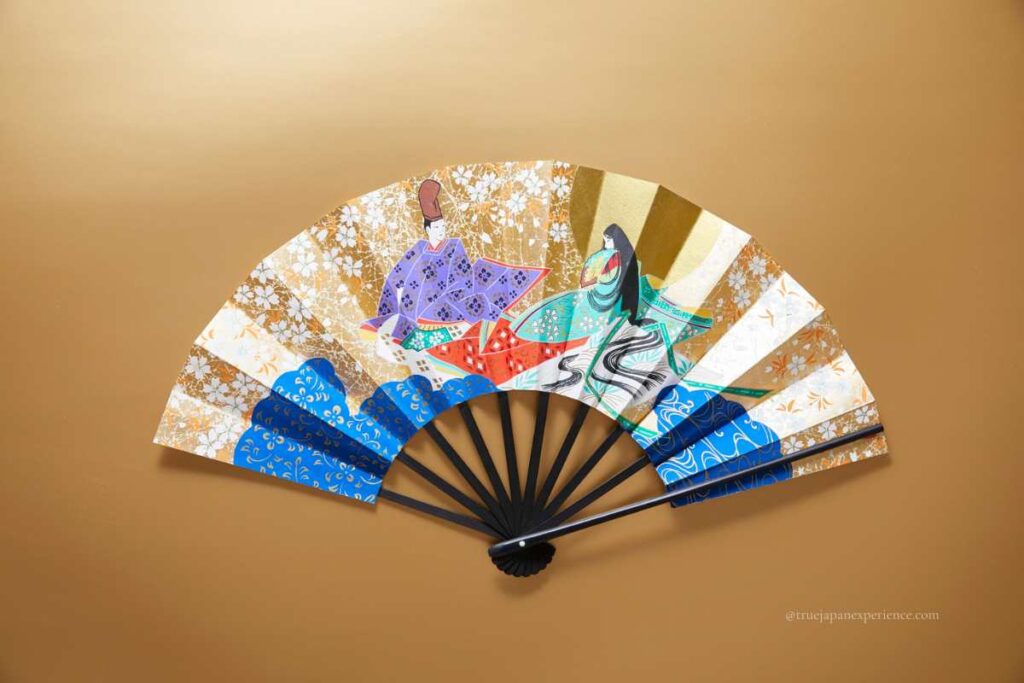
Many legends explain how people invented the folding fan in Japan! One popular story tells of a man from Tamba Province who saw a bat folding and unfolding its wings. Inspired by the bat’s movement, he created the first folding fan.
Another tale tells of a woman who used a folded piece of paper to fan a sick abbot at a temple in Kyoto. The abbot’s fever went down, and the folding fan became a symbol of healing and care.
Some of Japan’s oldest literature, like The Tale of Genji and The Pillow Book, mention the sensu. In these stories, ladies use fans to hide their faces or send secret messages.
The Craft of Making a Sensu
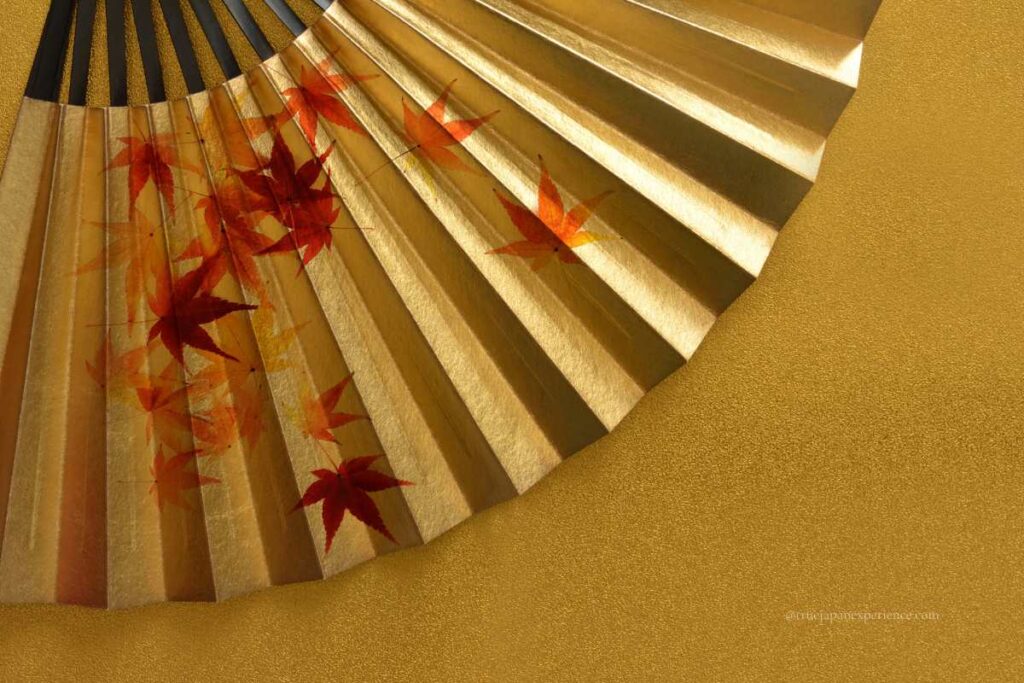
The craft of making a sensu passes down from generation to generation.
Skilled artisans carve bamboo or wood to make the bones of the fan. They paint the paper or silk with soft, beautiful designs like pink cherry blossoms (sakura), red autumn leaves, graceful cranes, fierce dragons, and mountain scenes.
In places like Kyoto and Nagoya, where fans have a long history, artisans spend many hours perfecting these details.
In Nagoya, the bones grow strong with many layers of bright lacquer. In Kyoto, people prize Kyō sensu for their delicate beauty and perfect style.
Some good fans even include tiny gold leaf or fine silk paintings. Every fan becomes a small, wonderful piece of art!
Sensu and Uchiwa: Different Fans for Different Needs
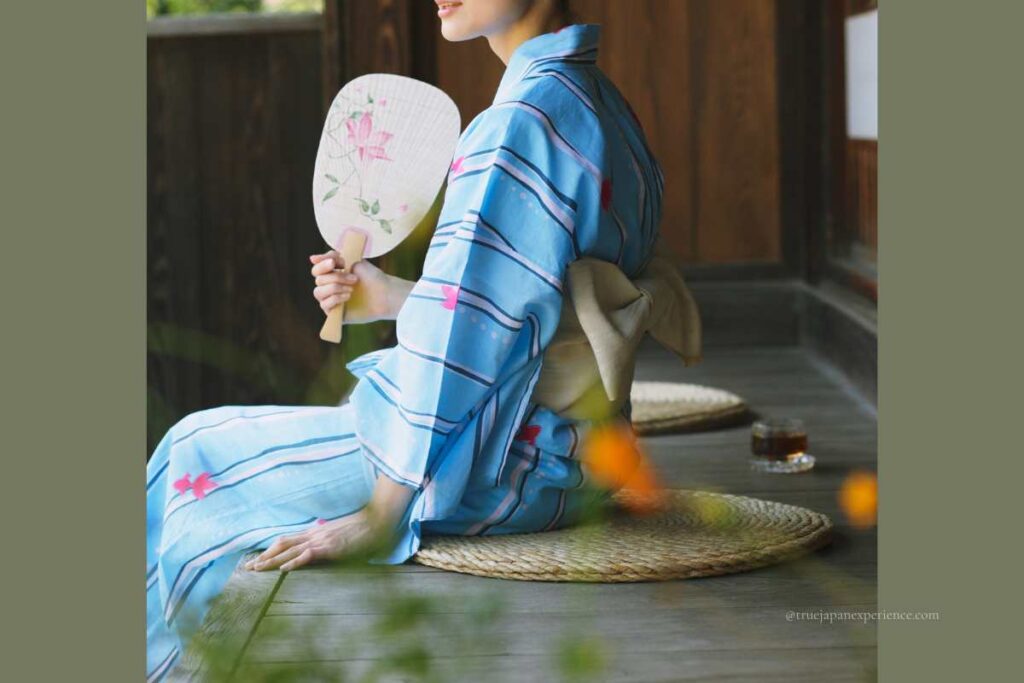
Japan has two main types of fans: the folding sensu and the flat uchiwa.
The uchiwa is a fixed fan with a round or oval shape that you cannot fold. People originally brought it from China. Many use the uchiwa at festivals and to stay cool in summer.
The sensu stands out because you can fold it. It also shows beautiful art and has a long history in Japan’s royal courts.
Both fans are part of daily life in Japan, but the sensu has a special charm—it cools you with a gentle wind and carries stories that last for hundreds of years.
Why Choose a Sensu (Japanese Folding Fan)? A Beautiful Gift and Meaningful Souvenir

The sensu is light and easy to carry, making it a perfect gift or souvenir from Japan.
It carries deep meanings, blending art, history, nature, and symbolism all in one item.
When you give someone a sensu, you share a wish for their happiness and good luck—making it a thoughtful and special present.
Besides its meaning, the sensu also respects nature because artisans make it with natural bamboo and traditional Japanese paper. From the ancient Heian court to today, the sensu has been a symbol of beauty, grace, and good wishes for many people.
Next time you see or hold a sensu, think of the skilled artisans who made it, the stories it carries, and the luck it hopes to bring.
The sensu is more than just a fan—it is a story, a tradition, and a little miracle of Japanese culture.
